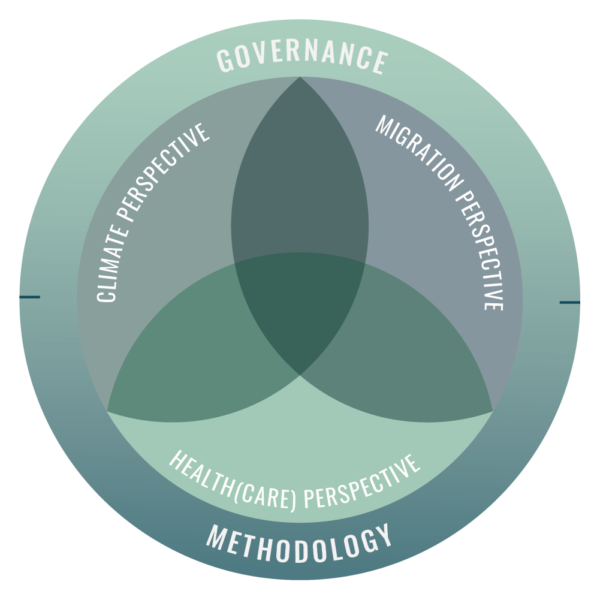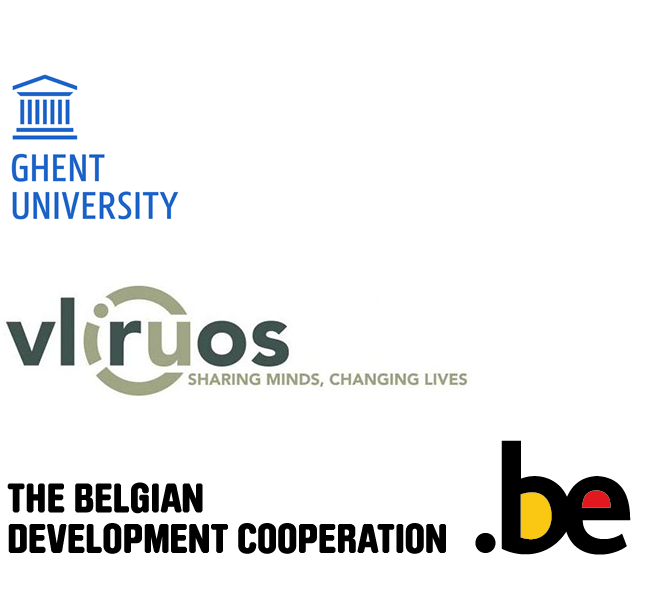About us
CliMigHealth’s vision is to render broad societal impact by generating knowledge on the interactions between climate change, migration and health(care). Ultimately, the goal is to better adapt to, mitigate and prepare for current and future effects of climate change; to have a greater understanding of the role of migration and its impact; and to develop resilient, inclusive and responsive health systems.
About
It is our vision to assist researchers, communities and policymakers to adapt to, mitigate and prepare for current and future effects of climate change and migration on health and health services, and to develop resilient, inclusive and responsive health systems.
How climate change, migration and health interact
During 2020, more than 30 million people were driven from their homes by extreme weather conditions. That number is expected to rise as climate change acts as a “threat multiplier” for migration, through its intersection with economic, political, and social drivers of mobility.
Sudden onset climate hazards like floods and cyclones, and slow-onset climate hazards like sea level rise and drought can trigger people to migrate.
Whether people move, who moves, and how they move depends however on many factors including socio-economic status, social connections, legal barriers to movement, and their capacity to move in terms of health and wealth.
Climate mobility includes rural-urban migration, displacement, planned relocation, or cross-border migration. In other situations, people may be immobile or become trapped, meaning they cannot move to another location.


Climate change and its related mobility responses, both coined as one of the main public health crises of the 21st century, often have adverse, and sometimes beneficial, effects on health and health systems.
While people moving for climate change may not have different health needs to migrants moving for other reasons, the main health issues in this context include: changing patterns of infectious disease, new or exacerbated health issues related to underlying non-communicable diseases (NCDs), or difficulties in NCD management, and psycho-social health issues.
Climate threats may also push those with the poorest health to places with fragmented access to health care, exacerbating their health needs.
Health services often struggle to ensure adequate and equitable access to care for those affected, and to meet the changing needs of dynamic (mobile, sending, and host) populations.
How climate change, migration and health interact
During 2020, more than 30 million people were driven from their homes by extreme weather conditions. That number is expected to rise as climate change acts as a “threat multiplier” for migration, through its intersection with economic, political, and social drivers of mobility.
Sudden onset climate hazards like floods and cyclones, and slow-onset climate hazards like sea level rise and drought can trigger people to migrate.
Whether people move, who moves, and how they move depends however on many factors including socio-economic status, social connections, legal barriers to movement, and their capacity to move in terms of health and wealth.
Climate mobility can be rural-urban migration, displacement, planned relocation, or cross-border migration. In other situations, people may be immobile or become trapped, meaning they cannot move to another location.

Climate change and its related mobility responses, both coined as one of the main public health crises of the 21st century, often have adverse, and sometimes beneficial, effects on health and health systems.
While people moving for climate change may not have different health needs to migrants moving for other reasons, the main health issues in this context include: changing patterns of infectious disease, new or exacerbated health issues related to underlying non-communicable diseases (NCDs), or difficulties in NCD management, and psycho-social health issues.
Climate threats may also push those with the poorest health to places with fragmented access to health care, exacerbating their health needs.
Health services often struggle to ensure adequate and equitable access to care for those affected, and to meet the changing needs of dynamic (mobile, sending, and host) populations.

Mission
To realise our vision, our mission is to guide more comprehensive and sustainable responses to address the complex migration and health(care) patterns arising from and contributing to climate change.
CliMigHealth is an international, transdisciplinary network, integrating diverse expertise and better representing the Global South, through strengthening research, educational and knowledge translation capacity.
CliMigHealth aims to form a collaborative and knowledge platform between academic institutions, non-profit organisations and individual experts.
Guiding principles and activities
As the network moves past its first five-year cycle (2020-2024), which culminated in a highly-attended two-day conference, the following five principles will continue to help guide network members through the next five years from January 2025 till January 2029 .
- Enable researchers, NGOs, practitioners, and journalists to explore the climate change, migration, and health(care) nexus.
- Communicate research findings to allow for policy reform, to be accessible to the broader public and to be visible.
- Break down silos that exist between disciplines and enable cross-cutting education and research.
- Build up early career researchers through the internship program and by allowing them into a network of globally recognised institutions and leaders.
- Advocate for a climate-resilient future.
The network will engage with the following activities that follow the vision, mission and guiding principles:
Research
Research within CliMigHealth is transdisciplinary, with a wide variety of methodologies and fosters collaboration between and within research teams in the South and the North.
This allows evaluation of health-determining interventions at micro, meso and macro level with special attention to what works, for whom and how.
Transdisciplinary (health, social and political, environmental sciences and economics) research findings are integrated to inform policy(makers).
Education
CliMigHealth supports and develops interdisciplinary and global education programs, including under- and postgraduate training and curricula, workshops, and summer schools.
The target audience is exchange students, junior and senior researchers, and non-academic partners with various backgrounds, interests, and nationalities.
The emphasis lies on climate- and migration-related health, interdisciplinary exchange, methods, representation, systems and complexity thinking.
Public Awareness
CliMigHealth builds on the solid expertise of the network partners to translate knowledge to the public and decision makers in comprehensible messages.
As a knowledge platform on the climate-migration-health nexus, CliMigHealth provides input for information seekers and raises awareness among the general public.
Key outputs are the use of multimedia, arts, hybrid virtual and physical exhibitions, events and interactive tools.
Research framework including five streams
Network output is guided by a research framework, that contains five thematic research streams. Network members and research projects might sit firmly within a stream or cut across multiple streams. The framework illustrates that all are welcome to join and collaborate.

Methodology
Crosses many boundaries and provides the groundwork for future research within the nexus. In addition to that, advancing the current research at the core of the nexus will be essential, for which novel methodological approaches that focus on systems thinking and complexity, and transdisciplinary collaborations are indispensable.
The climate perspective
Refers to detecting and understanding how climate change impacts migration patterns, health outcomes and healthcare services. Studies in this stream help to understand how abovementioned impacts interact with each other, including its mediating factors. This can provide evidence to foster mitigation and adaptation, as well as limiting loss and damage of climate change.
The migration perspective
Refers to the role of climate change and health(care) as drivers for migration and the impacts of migration for health(care) and the environment. Studies in this stream add to the ongoing debate concerning the impact of climate change on migration patterns around the world and explore how climate change may affect migration through other transmission channels – like through health(care) – than the well-studied agricultural income channel. Moreover, it covers studies considering health(care)-related migration drivers, as well as the impact on health and healthcare access among (climate) migrants and their host communities worldwide.
The health(care) perspective
Refers to the impact of climate change and migration on health and how to prepare for and respond to climate change and migration with health(care) interventions. Studies in this stream aim to mitigate and adapt healthcare, and health systems resilience will be a major point of focus helping align health policy research to implementation on the ground.
Governance
Refers to the macro-level factors such as human rights, economic actors and the geopolitical agenda related to the nexus. Studies in this stream can contribute by identifying the governing factors that impact climate change, migration and health and investigate how research can benefit global diplomacy efforts.







